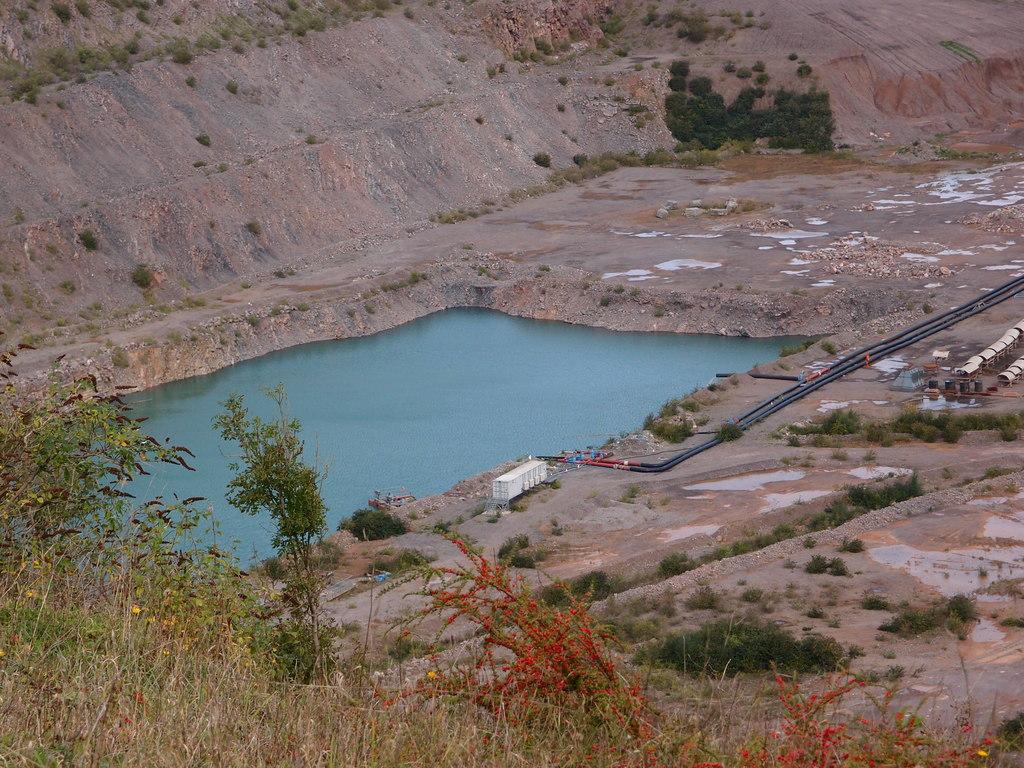Impacts of industry on the physical environment
When industries like mining and quarrying get to work, they can leave a significant mark on the environment. Think about vast holes dug into the countryside and towering piles of rubble left around towns where mining happens.
Consider the factories that manufacture our goods – they can spoil the natural beauty with their large, industrial structures. But the impact goes deeper:
- These factories can emit harmful pollutants into the air and water, damaging the soil.
- They generate waste often buried in landfills, contaminating the air, water, and soil.
- Transporting raw materials and finished products primarily by trucks leads to more air pollution and environmental damage, especially when transporting requires constructing new roads or expanding existing ones.
How can industrial development be more sustainable?
Nowadays, people expect industries to take better care of our planet. That means using less of Earth’s resources, like water and minerals, and looking after all the different forms of life that share our world with us. It’s about keeping the air clean and ensuring everyone has a healthy place to live. Here’s how we can do it:
- Use technology to reduce emissions from power plants and heavy industry.
- Clean the emissions that power plants release so it’s less harmful, eliminating gases like sulfur dioxide and nitrogen oxide.
- Set strict targets for water quality, air pollution and landscape damage for industry.
- Impose heavy fines for industrial pollution incidents
- Protect, restore and conserve natural ecosystems to support biodiversity.
- Monitor and regulate industry to reduce environmental impacts.
Quarrying in the UK
Quarrying can have a significant impact on the environment, for example:
- Quarrying can destroy natural habitats, disrupting the ecosystems that support various plant and animal species.
- The quarrying process often involves significant noise pollution and dust, which can affect the health of nearby residents and the overall quality of the air.
- Water quality can be compromised due to quarry runoff, which can contain suspended solids and chemicals that pollute local waterways.
- The visual impact of quarrying is often negative, with scars on the landscape from removing soil and rock, altering the area’s natural beauty.
After a quarry has closed, companies are expected to restore or improve the environment. Restoration can include:
- Creation of Wildlife Reserves or Habitats: By planting native trees and creating water bodies, a closed quarry can be transformed into a sanctuary for birds, insects, and other wildlife, encouraging biodiversity.
- Recreational Spaces: Old quarries can be repurposed into public parks, picnic areas, hiking trails, or even golf courses, providing community spaces for recreation and leisure.
Water-Based Uses: Some quarries can become lakes or ponds, which can be used for water sports such as fishing, swimming, or boating or as reservoirs for rainwater collection. - Commercial Development: With proper structural reinforcement, quarries can be developed into commercial spaces like shopping centres, offices, or even residential areas, though this requires careful planning to ensure stability and safety.
- Educational and Research Facilities: They can be used for geological research or as outdoor educational centres where students and visitors can learn about geology, natural history, and the importance of environmental restoration.
Torr Quarry, Somerset
Aggregate Industries manages Torr Quarry, a significant limestone extraction site among the Mendip Hills’ eight quarries. The quarry is a significant employer in the area, providing over 100 jobs, and is estimated to inject over £15 million annually into the local economy.

Torr Quarry © Copyright Rick Crowley
The site, spanning 2.5 km² and 7 kilometres east of Shepton Mallet, has been operational since the 1940s. While it once produced 8 million tonnes of limestone annually, its output has decreased to about 5 million. The material from Torr Quarry is vital for construction projects, especially for creating rock chippings used in road building. An impressive three-quarters of the quarry’s yield is shipped by rail, primarily servicing the southeast.
Torr Quarry is committed to sustainable practices, such as:
- Restoration efforts include transforming parts of the quarry into wildlife-friendly lakes for recreational purposes and water supply.
- Landscaping 80 hectares with grass and trees to blend with the natural surroundings.
- Crafting limestone features to enhance the area’s natural aesthetics.
- Collaborating with the Somerset Wildlife Trust as part of the Mendip Hills Living Landscape Partnership to foster habitats teeming with biodiversity.
- Conducting ongoing assessments to monitor noise, vibration, dust emissions, and water quality.
- Prioritising rail transport to reduce the impact on local roads and communities.
In 2012, plans were approved to deepen the quarry rather than expand its footprint, which is expected to lessen environmental disturbance and extend the quarry’s operational life until 2040.
Summary
Flashcards
Coming soon
Check Your Knowledge
Coming soon
Quiz
The Changing Economic World
Menu coming soon
